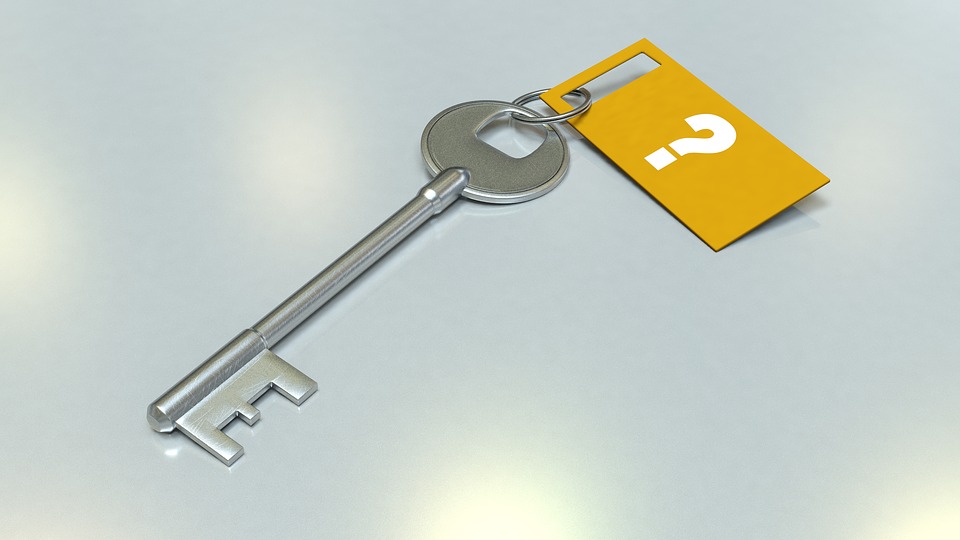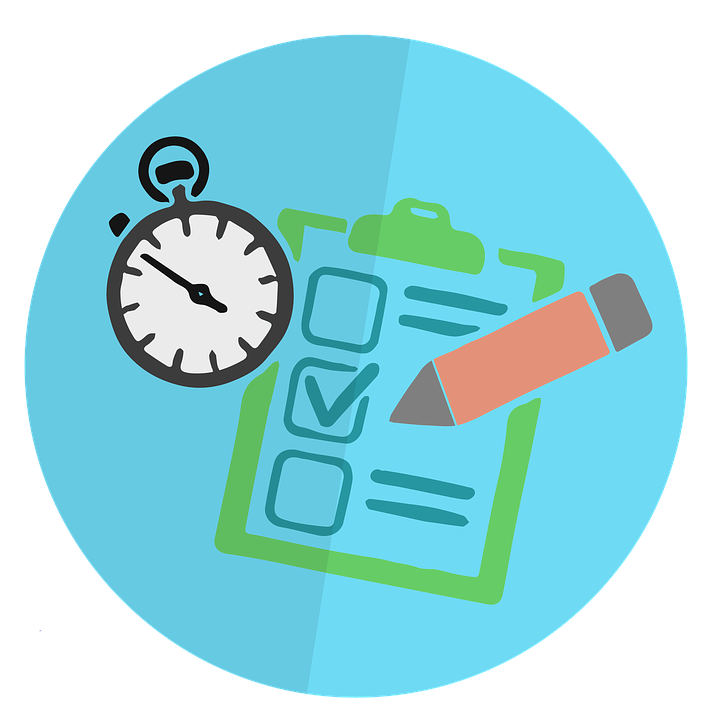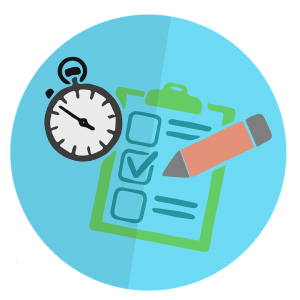
How to Use Assembly Items in Quickbooks
 In Quickbooks, an assembly item is a line item used when creating a purchase or sales form. They are used to combine inventory parts and sub-assemblies together. When you create an assembly item in Quickbooks, the inventory parts and sub-assemblies (assembly items) in your Bill of Materials are subtracted from your inventory, which in turn increases the total quantity of the respective assembly item. To learn more about Quickbooks assembly items and how to use them, keep reading.
In Quickbooks, an assembly item is a line item used when creating a purchase or sales form. They are used to combine inventory parts and sub-assemblies together. When you create an assembly item in Quickbooks, the inventory parts and sub-assemblies (assembly items) in your Bill of Materials are subtracted from your inventory, which in turn increases the total quantity of the respective assembly item. To learn more about Quickbooks assembly items and how to use them, keep reading.
There are two primary steps required to create an assembly item in Quickbooks. First, you’ll need to tell the Bill of Materials what components are needed to make the item, after which you can build a quantity of the item so that Quickbooks can subtract the parts from the inventory and then add the new quantities of the respective item. When you build an assembly item, the inventory parts are erased as separate parts in your inventory. This is because they are converted to a new item known as an inventory assembly.
Once you’ve defined your assembly items, you’ll notice the items added to your inventory as a “build.” Basically, assembly builds are used to ensure that inventory quantities are correct. Building an assembly item automatically subtracts the inventory parts and sub-assemblies from the Bill of Materials, and as we mentioned earlier, this automatically increases the quantity of the respective assembly item.
So, when should you use assembly items in Quickbooks? According to Intuit, there are several benefits associated with assembly items. Retailers, for instance, can use them to track finished products separately from individual items in their inventory. Building an assembly automatically adds an assembled item to your inventory quantity while also subtracting the component parts and assembly items in the process. Therefore, it allows you to see exactly how many assembled and component items you have in inventory.
Assembly items can also be used to customize the price of assembled items. If you want to specify a price for an assembly that’s higher or lower that the total cost of its component items, you can do so by creating an assembly item.
Furthermore, assembly items allow you to see detailed information about your finished products and goods, including the date on which the items were assembled, the quantity of assembled items, the cost of assembled items and a list of all component items.
Did this tutorial work for you? Let us know in the comments section below!

How to Sync Quickbooks Between Two Computers
 Want to run Quickbooks on multiple computers in your office? Well, you’ll need to sync them with each other first. Doing so allows business owners and accounts to collaborate on the same company file. If the computers are synced, changes made to one computer’s Quickbooks won’t affect the other. So, for a step-by-step walkthrough on how to sync Quickbooks between two computers, keep reading.
Want to run Quickbooks on multiple computers in your office? Well, you’ll need to sync them with each other first. Doing so allows business owners and accounts to collaborate on the same company file. If the computers are synced, changes made to one computer’s Quickbooks won’t affect the other. So, for a step-by-step walkthrough on how to sync Quickbooks between two computers, keep reading.
Before we begin, it’s important to note that you need a single Quickbooks company file. If you have two or more company files, you’ll need to merge them together before proceeding. This is done by using the Data Transfer Utility tool, which you can download for free from the Intuit Marketplace. Install the tool on the computer you wish to host your Quickbooks company file. This will be your primary computer that serves as the host for other computers.
When you are ready to sync your two computers together, copy the Quickbooks installers file on both computers. This should bring up a dialog box asking you to confirm installation and agree to the terms and conditions of the license. Click “Yes” to all prompts and proceed with the installation. You’ll then then need to choose “Use Quickbooks on this computer,” after which you can select the option to “Store Company file for Network Sharing.” Next, enter your Quickbooks product license number on the primary computer on which you are installing the software, followed by “Install.” The installer will begin to run, after which you should click “Utilities” and “Host Multi-User Access.”
Next, go to the “Scan Folders” menu and select “Add Folder” followed by “Scan” to begin to scanning the primary computer on which you are hosting the Quickbooks company file. Once the installer has verified your company file, click “Close.”
You aren’t out of the woods just yes. You’ll need to access the “Company” menu and select “Set Up Users and Passwords” for this computer. Go ahead and add a user with password, and then set up access for the second computer.
On your second computer, select “File,” followed by “Open or Restore Company” and “Open a Company in Quickbooks.” You can then browse to the location of your company file, select it, and log in using the username and password that just recently created in the previous step. Congratulations, you’ve just synced Quickbooks between two computers!
Did this tutorial work for you? Let us know in the comments section below!

What is Chart of Accounts in Business Accounting?
 In business accounting, a chart of accounts (COA) is a detailed list of accounts used by the respective business. It’s purpose is to define the class of items that the business pays for while also organizing the business’s finances. A typical COA contains lists the type of account and number associated with the account. Normally, account numbers in COAs are at least five digits in length. Each of these digits represents a different division within the company or department.
In business accounting, a chart of accounts (COA) is a detailed list of accounts used by the respective business. It’s purpose is to define the class of items that the business pays for while also organizing the business’s finances. A typical COA contains lists the type of account and number associated with the account. Normally, account numbers in COAs are at least five digits in length. Each of these digits represents a different division within the company or department.
By defining the class of items for which a business pays, COAs help to segregate various transactions. A COA, for instance, separates expenses from revenue, allowing businesses to see a general overview of their organization’s financial health. While other lists can also reveal a business’s financial health, COAs are simple and easy to create, assuming you know how they work.
So, how are accounts listed on COAs exactly? Normally, they are listed in the order of their appearance on bank and financial statements. This means balance sheet accounts are listed first, followed by asset accounts, liability accounts, equity accounts, etc. However, being that most countries do not have a standard COA — including the United States — some companies may format their COA in a different manner. The key thing to remember when creating a COA is that it should be consistent with your business’s past practices. If use a different format, stick with that format instead of changing to a new format.
There are many different types of accounts, each of which has its own specific use. An asset account, for instance, may include bank accounts with a positive balance, cash, goodwill and accounts receivable. A liability account, on the other hand, represents debt and other financial obligations of the business, including bank loans, credit cards, bonds payable, etc. Other types of accounts used in COAs include equity accounts, revenue/income accounts, expense accounts and contra accounts.
Of course, COAs are also an important part of Quickbooks. Whether it’s Quickbooks Online or Quickbooks Desktop, a COA follows a similar principle by listing all accounts — asset, liability, equity, expense, etc. — used in a business’s transactions. This is perhaps one of the most important elements of Quickbooks accounting, as it helps to keep a business’s financial information and transactions properly organized.
Have anything else that you’d like to add? Let us know in the comments section below!

Why Does Bill Have ‘Unpaid’ Status After Paying It?
 Quickbooks supports several different methods for paying bills, including Write Checks and Pay Bills. Only the latter, however, will the place the bill in closed status. If you attempt to bill a bill using the Write Checks feature, it will remain open. As further explained by Intuit, if you use Write Checks and Enter Bills together, the respective check will not be linked to the bill; thus, the bill remains open. This is why it’s a good idea to get into the habi of using the Pay Bills feature, which will avoid conflicts such as this.
Quickbooks supports several different methods for paying bills, including Write Checks and Pay Bills. Only the latter, however, will the place the bill in closed status. If you attempt to bill a bill using the Write Checks feature, it will remain open. As further explained by Intuit, if you use Write Checks and Enter Bills together, the respective check will not be linked to the bill; thus, the bill remains open. This is why it’s a good idea to get into the habi of using the Pay Bills feature, which will avoid conflicts such as this.
So, how do you fix a bill that’s in open/unpaid status because of the Write Checks feature? There are a few solutions, one of which is to remove the bill and create or leave the Write Check entry. However, you should only use this option if you don’t need all of the information associated with the payment in your Accounts Payable report.
A second solution is to link the check to a bill. Assuming the check has been reconciled, you won’t be able to delete it without throwing off your books. You can, however, link the check to the bill. This is done by logging in to your Quickbooks account and changing the Expense account to Accounts Payable. When you reach the written check, simply change the Expense account to Accounts Payable. Next, on the Customer: Job menu, select the vendor’s name. Without entering a name, Quickbooks will reveal an error. After after entering a name for the vendor, click “Save & Close.”
You’ll then need to pay the bill. This is done by accessing the “Vendors” menu, followed by “Pay Bills.” From here, choose the bill or bills associated with the check. Next, click “Set Credits” and check the box labeled “credit.” You can then adjust the total amount of the credits as needed. When you are finished, click “Done,” followed by “Pay Selected Bills.” Assuming you followed these steps correctly, the bill will appear as paid status instead of open/unpaid.
The bottom line is that you need to fix any paid bills that appear as open/unpaid. Failure to do so will throw off your books. Thankfully, Quickbooks simplifies this process by offering several solutions. Refer to the options listed here to ensure that paid bills show as paid in your Quickbooks account.
Did this tutorial work for you? Let us know in the comments section below!

How to Record Opening Balance in Quickbooks
 In accounting, an opening balance is the amount of money in an account, either when it was initially created or at the beginning of the fiscal year. Regardless of the type of account, it’s important to record the correct opening balance; otherwise, your entire books will be thrown off. Thankfully, Quickbooks simplifies the process of recording opening balances, which we’re going to explore in this blog post.
In accounting, an opening balance is the amount of money in an account, either when it was initially created or at the beginning of the fiscal year. Regardless of the type of account, it’s important to record the correct opening balance; otherwise, your entire books will be thrown off. Thankfully, Quickbooks simplifies the process of recording opening balances, which we’re going to explore in this blog post.
Before we begin, it’s important to note that you should not enter an opening balances on accounts that did not have a balance before the date specified on your “Quickbooks start date.” If the account had a balance after the date listed here, however, you should record that balance.
There are several ways to record an opening balance in Quickbooks, one of which is by clicking F1. Alternatively, you can select “Should I enter an opening balance” when setting up either an account, customer, or vendor in Quickbooks. This will bring up a new window that walks you through the process of recording an opening balance. This is arguably the easiest way to record opening balances, as you simply need to complete the fields and proceed with the steps listed on screen.
Furthermore, you can record an opening balance when using a general journal entry created from the Balance Sheet for the previous year. However, there are a few things you should know when recording opening balances from a general journal entry.
According to Intuit, business owners and accountants should consider using an Opening Balance Equity when recording opening balances from a general journal entry. The Opening Balance Equity works to offset the account; thus, ensuring the journal entries are balanced.
If you are recording balances for the start of the fiscal year, you may want to consider entering a balance for the previous year’s retained earnings instead of recording every account for income, expense and cost of goods sold (COGS).
Keep in mind that you can only record one accounts receivable or accounts payable transaction for every general journal entry. As such, you’ll have to create multiple journal entries to have the balances for your accounts. Also, be sure to specify a vendor or customer name in the “Name” field of your general journal entries to accounts payable, receivable and sales tax payable.
Did this tutorial work for you? Let us know in the comments section below!

How to Print a Batch of Invoices in Quickbooks
 Invoices are an important tool when running a business. If you perform a service that allows customers or clients to pay after the service has been performed, you’ll need to invoice them for the cost of that service. Assuming you use the Quickbooks accounting software, you can easily create and print invoices on the fly. But what if you need to create multiple invoices at the same time?
Invoices are an important tool when running a business. If you perform a service that allows customers or clients to pay after the service has been performed, you’ll need to invoice them for the cost of that service. Assuming you use the Quickbooks accounting software, you can easily create and print invoices on the fly. But what if you need to create multiple invoices at the same time?
Before we reveal the steps to creating a batch of invoices, let’s first go over the basics of an invoice. An invoice is essentially an itemized bill of the goods or services provided by a business owner to a customer or client. It contains the specific product or service purchased, as well as the respective cost of those products and services and the terms of payment. Not all businesses need or use invoices. However, those that provide services in advance — or sell products while allowing customers to pay after the fact — typically need them.
So, how do you print invoices in bath using Quickbooks? To do this, you’ll need to log in to your Quickbooks account and from the home screen, click the blue navigation bar on the left-hand side, followed by “Transaction.” From the “Transactions” tab, choose Sales > filter > Invoices, at which point you can choose the preferred “Status” for your invoices (e.g. “All Statuses”).
Next, you’ll need to select the dates for the invoices, followed by “All” for “Customer.” When you are finished, click “Apply” to apply the changes to your invoices. You can then click “Batch actions” to prepare the batch invoices for printing. Once selected, click “Print Transactions,” after which the invoices will begin loading in PDF format — this is the de-facto standard format for invoices created and printed in Quickbooks. You can then hover your mouse cursor on the bottom-right corner of the invoices and click the “Print” icon. You should see a new window appear with printing options, such as print in grayscale or color. Double-check to ensure the settings are correct and proceed to print. Sorry if you were expecting more, but that’s all it takes to print batch invoices in Quickbooks!
As you can see, printing batch invoices in Quickbooks is a quick and easy process. While it takes a few additional steps than simply printing a single invoice, any business owner or accountant should be able to complete this task in just a few minutes by following steps outlined here.
Did this tutorial work for you? Let us know in the comments section below!

What is an Independent Contractor?
 Not all workers in the United States are classified as “employees.” According to a recent article published by Forbes, approximately 35% of the entire U.S. workforce are independent contractors. Furthermore, analysts believe this number will grow to 40% by 2025. So, what is an independent contractor exactly, and how do they differ from employees? To learn more about independent contractors, keep reading.
Not all workers in the United States are classified as “employees.” According to a recent article published by Forbes, approximately 35% of the entire U.S. workforce are independent contractors. Furthermore, analysts believe this number will grow to 40% by 2025. So, what is an independent contractor exactly, and how do they differ from employees? To learn more about independent contractors, keep reading.
Independent Contractors: The Basics
An independent contractor is a person, business or corporation that provides services and/or goods under a contract or other agreement. The key difference between an independent contractor and an employee, however, is that the former does not perform regular, ongoing work. Instead, independent contractors work on their own schedule.
The pay for independent contractors also differs from employees. Independent contractors are typically paid on a freelance basis, such as a flat amount of per job completed, whereas employees are usually paid by the hour or given an annual salary. There are other nuances separating the two, however, such as employee protection laws — something that’s not offered independent contractors.
Advantages of Being an Independent Contractor
There are several advantages to being an independent contractor, one of which is the ability to set your own hours (at least to some degree). While employees typically work on a fixed schedule, independent contractors have greater freedom over the hours which they work. Independent contractors are also able to develop a network of clients and customers, which can prove highly useful for long-term success.
Disadvantages of Being an Independent Contractor
On the other hand, however, there are also disadvantages to being an independent contractor. For starters, there’s no minimum wage required for independent contractors. Being that many independent contractors are paid per sale or by performance, you could end up making less than the minimum wage for your respective state. Secondly, independent contractors are responsible for paying their own taxes, which usually involves making quarterly estimated payments to the IRS based on how much you expect to earn for the year.
An independent contractor comes with its own pros and cons. However, there’s no denying the fact that independent contractors are becoming more and more popular in the United States. Whether it’s Uber, Lyft, AirBNB, etc., countless companies are now expanding their workforce by hiring independent contractors.
Have anything else you’d like to add? Let us know in the comments section below!

Intuit Searches for The Next ‘Firm of the Future’
 It’s that time of year again: Quickbooks-maker Intuit has announced its annual “Firm of the Future” contest.
It’s that time of year again: Quickbooks-maker Intuit has announced its annual “Firm of the Future” contest.
Available to accounting firms in the United States, United Kingdom, Canada and Australia, “Firm of the Future” follows in the footsteps of last year’s contest by seeking industry-leading firms. According to a press release issued by Intuit, entries will be open until August 13, 2017.
So, why should you enter? Well, accounting firms that participate in Intuit’s “Firm of the Future” have a chance to win $100,000 in prizes, including cash and a trip to Intuit’s Quickbooks Connect conference in San Jose, California. After collecting the entries, Intuit’s Rich Preece, along with a panel of judges from the company’s Small Business Group and Accountant Segment, will choose a finalist from each of the aforementioned four countries plus 15 runners up. Finalists will be chosen based on their use of technology and innovation to become the next “Firm of the Future.”
To enter the 2017 “Firm of the Future” contest, you’ll need to answer five questions about your accounting firm: How many small business clients do you serve? What percentage of your clients use Quickbooks Line? What advisory services to you perform on behalf of your clients? How do the products and technology you use help you deliver services to clients? How does your accounting firm use the web to reach new products?
“We have witnessed numerous inspiring firms in past years who have made great strides to embrace technology and we are excited to see what this year’s entries will bring to the table,” said Rich Preece, global leader of Intuit’s Accountant Segment, Small Business Group. “We are now in the third year of the Firm of the Future contest and our mission has remained constant ever since we began our search in 2015: to celebrate firms – from full-service to sole proprietors – who have welcomed the future and embraced the latest innovations to amplify their roles as trusted advisors and evolve their practice.”
Last year, Intuit named 24hr Bookkeeper as the winner for its “Firm of the Future” contest for 2016. 24hr Bookkeeper uses automated systems, apps and processes to streamline its accounting services. Additionally, the accounting firm offers fixed-fee pricing to improve transparency for its clients. For these reasons and others, Intuit named it the winner of its “Firm of the Future” contest for 2016.
You can learn more about Intuit’s “Firm of the Future” contest by clicking here.

How to View Retained Earnings in Quickbooks
 Are you trying to view the retained earnings of a balance sheet in Quickbooks? Well, you probably won’t find this information listed on any report. This is because the transition happens on the back end of Quickbooks. So, unless you made other entries to the Retained Earnings account, it won’t show when you access the account.
Are you trying to view the retained earnings of a balance sheet in Quickbooks? Well, you probably won’t find this information listed on any report. This is because the transition happens on the back end of Quickbooks. So, unless you made other entries to the Retained Earnings account, it won’t show when you access the account.
The good news is that you still view the details of a Retained Earnings account in Quickbooks. To do so, you’ll need to run a customized Profit and Loss report, after which you can focus on the New Income number. For a step-by-step guide on how to view a Retained Earnings account in Quickbooks, keep reading.
Before we begin, it’s important to note that Quickbooks doesn’t allow you to click on retained earnings from the respective balance sheet. This is because the Retained Earnings account is essentially a rollover from the previous years’ net profit. In Quickbooks Online, it will swap the funds from your income automatically, without recording the transaction.
To view the details of a Retained Earnings account, you’ll need to run a Profit and Loss statement from the previous year, which will reveal the Retained Earnings account number. So, log in to your Quickbooks Online account and choose Reports > Go to report > Profit and Loss. From here, choose the Profit and Loss report, after which you can set the date to “All Dates” for the “Transaction Date” and then click “Run Report.” Finally, click “Net Income” to see a report of all transactions that fall under this criteria.
Intuit also recommends viewing the Profit and Loss report by year to see the details of a Retained Earnings account. Basically, this allows you to see the amount from the profit and loss transferred into your Retained Earnings account. To perform this operation, click Reports > Go to report > Profit and Loss > Customize > Rows/Columns > Fiscal Years or Calendar Years > Run Report.
Once you’ve run the report, check to see if the number listed is the same as your Returned Earnings number. If the number is different, only transactions that affect your balance sheet will be entered. You can see user-generated transactions by clicking the Gear icon > Chart of Accounts > Retained Earnings > Run Report > set Transaction Date to “All Dates” and then click “Run Report.”
Did this tutorial work for you? Let us know in the comments section below!

Intuit Partners with Bill.com to Introduce Bill Pay Feature for Quickbooks Online
 Quickbooks Online users now have the ability to pay bills more quickly and efficiently thanks to a new partnership between Intuit and Bill.com.
Quickbooks Online users now have the ability to pay bills more quickly and efficiently thanks to a new partnership between Intuit and Bill.com.
The two companies announced their partnership last month, saying the new bill pay feature will save business owners more than 50% of their time when paying bills. Furthermore, it will allow business owners to better control their cash flow and access their financial management tools more easily through the Quickbooks Online interface.
As you may already know, Quickbooks Online is Intuit’s cloud-based accounting solution for small businesses. Unlike the Desktop version, Quickbooks Online is accessed over the Internet through a secure server. This means you can log in and access your account from anywhere, anytime — all you need is a computer or compatible device with an active Internet connection.
So, what kind of new features can you expect in Quickbooks Online now that Intuit has partnered with Bill.com? According to a press release issued by the two companies, Quickbooks Online will now support the ability to pay all of your bills in one place. Using this feature, business owners can import and pay bills without ever leaving the Quickbooks Online interface. Furthermore, business owners can send ACH bank transfers from Quickbooks Online.
A second new feature introduced in Quickbooks Online is Payment Tracker. As the name suggests, Payment Tracker allows business owners to track the status of their bill payments as well as handle exceptions, void/stop payments, and reissue payments. When using either of the aforementioned features, Quickbooks Online will provide the user with a cleared check image as verification.
Finally, Quickbooks Online will now support Electronic Payment Setup. Basically, this feature allows business owners to set up vendors so they can bill them using bank transfers and electronic payments, all through a convenient and easily accessible portal.
“For many small businesses, the traditional paper-based process of organizing, paying and managing bills is outdated, complex and time consuming. Now that digital payments are available directly within QuickBooks, there’s no reason to hang on to paper checks,” said René Lacerte, CEO of Bill.com.
If you’re interested in using these features, you’ll need to sign up for Bill Pay for Quickbooks Online. This will allow you to conveniently pay and manage your bills using these new features.
What do you think about the new bill pay featured offered for Quickbooks Online users? Let us know in the comments section below!
